Get ready to embark on a culinary journey across the globe as we dive into the delectable realm of international wedding cakes (and other wedding delicacies) and the fascinating traditions behind them!
From lavish multi-course feasts featuring dishes that defy the ordinary to intimate gatherings with symbolic bites woven into the ceremony, join us as we explore quirky and delightful wedding food customs from around the world. Bon appétit and happy nuptials!
Thailand’s Fabulous Foi Thong Cake
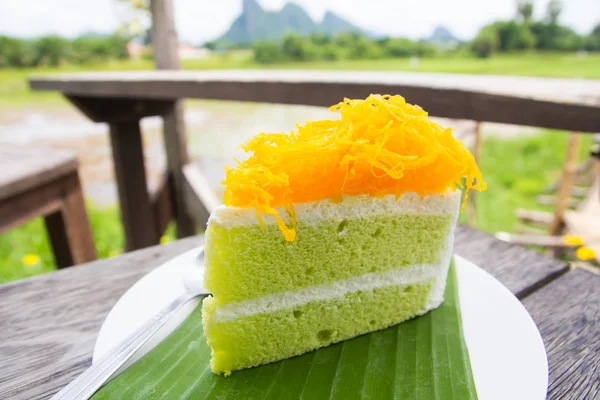
At Thai weddings, the foi thong cake steals the spotlight as a captivating centerpiece. Renowned for its auspicious golden hue believed to bestow good fortune on the newlyweds, this special cake boasts a distinctive topper crafted from foi thong noodles.
These sweet strands, composed of egg yolk and sugar water, are dried before adorning the cake. While the cake’s symbolism is fixed, the couple enjoys the freedom to choose the flavors, adding a personalized touch to this delightful and meaningful wedding tradition.
Mexico’s Tasty Tres Leches
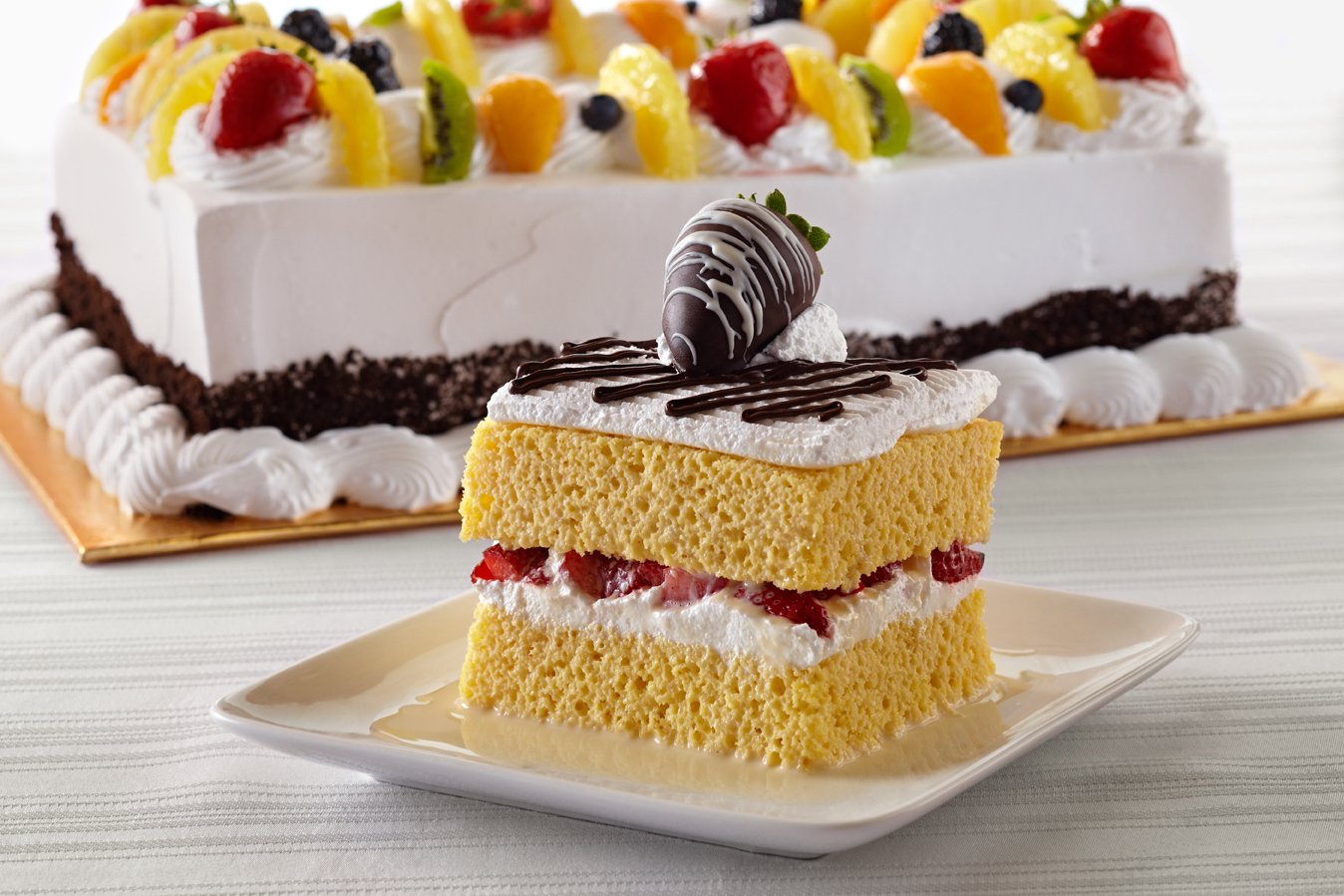
Say hello to the party on a plate—Tres Leches! Perfectly decadent and thus perfect for a significant event such as marriage, this Mexican marvel is no ordinary cake; it’s a fluffy sponge extravaganza drenched in a trio of milky goodness—evaporated milk, sweetened condensed milk, and whole milk.
Picture this: a sweet symphony of moist perfection that’s three times the fun! It’s no wonder they call it “three milks”—because one just wouldn’t be enough for this delicious dance floor!
France’s Charming Croquembouche

Say bonjour to the pièce de résistance of French weddings – the Croquembouche! Picture this: a pyramid of crème-filled pastry puffs, lavishly drizzled with caramel, creating a tower of sweet perfection. Each profiterole-packed tower generously offers three or four bites of pure delight per person.
While the traditional flavors hold their own, adventurous newlyweds take a creative plunge into unique flavors and drizzles. This decadent dessert, a masterpiece of patience, is a time-consuming labor of love, making it the ultimate showstopper reserved for weddings.
Bulgaria’s Beautiful Bread Tradition
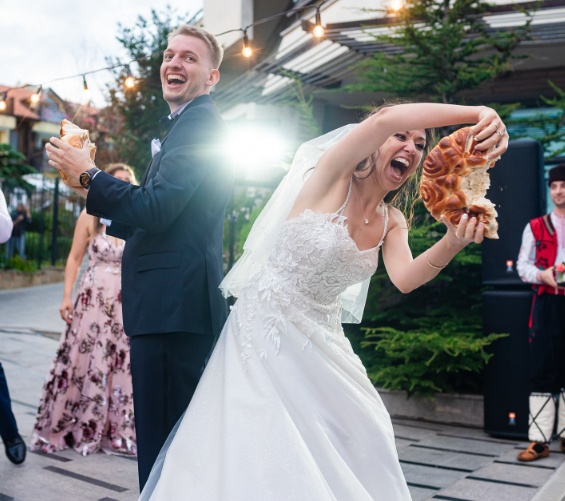
In Bulgarian wedding tradition, it is bread that steals the spotlight. During the ceremony, the groom’s mother offers a duo of bread slices to the happy couple. The first, a dash of salt, serves up a reminder of life’s savory challenges, while the second takes a sweet plunge into honey, symbolizing the delicious times ahead.
But that’s not all – in a bread-tugging showdown, the newlyweds battle it out for the bigger piece, determining who takes the lead in household heroics. It’s not just a meal, it’s a marriage masterpiece!
Bermuda’s Beautiful Cedar Sapling
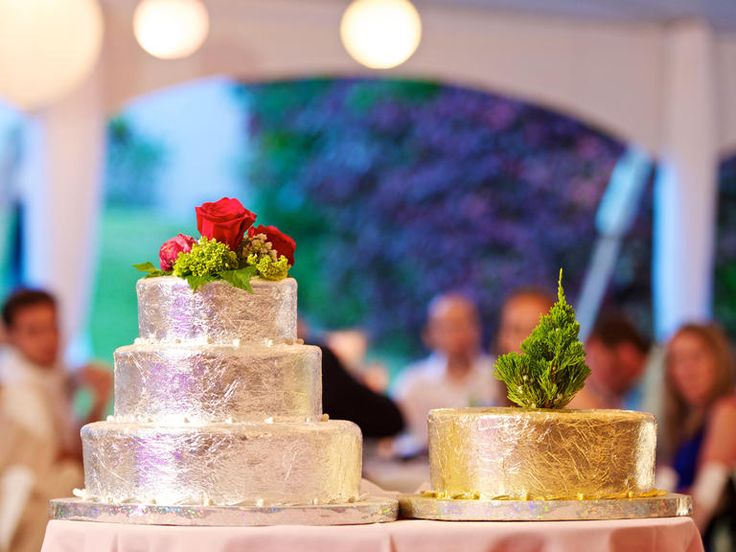
Bermuda weddings boast a unique tradition deviating from the norm: each newlywed receives their own cake, uniquely decorated to symbolize their aspirations for the union. The bride’s grand three-tiered fruitcake, adorned with silver icing, signifies a fruitful marriage, while the groom’s single-tiered cake, decked in gold icing, represents prosperity.
Both cakes share a common touch—a crown of cedar saplings, later planted by the couple, symbolizing their growing love. It’s not just dessert; it’s a sweet saga of individual hopes and shared dreams!
The UK’s Fantastic Fruitcake
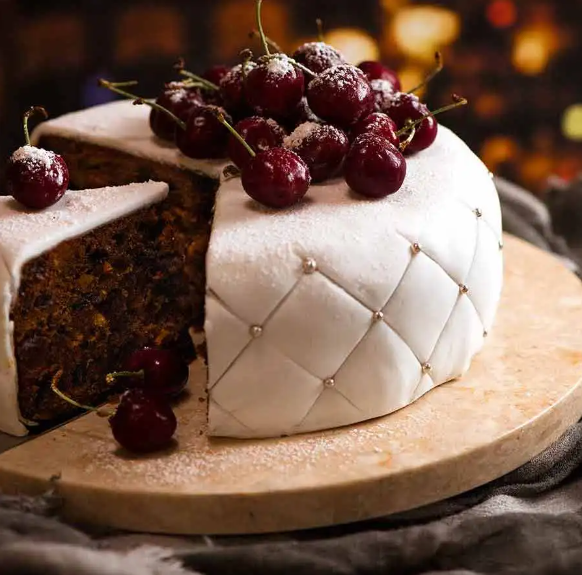
This tradition is nothing short of royal! Let’s rewind to the 17th century when “bride pie” transformed into “bride cakes,” and thanks to Queen Victoria, fruitcake took the tiered spotlight. Oh, and it’s not just for show, it’s also a delightful time capsule, saved for the first anniversary.
With a splash of liquor, this cake isn’t just delicious, it’s a long-lasting reminder of the sweet start to wedded bliss. These days, the top tier isn’t just a treat; it’s a family tradition, gracing christenings and proving that love, like fruitcake, only gets better with time!
Brazil’s Bubbely Bem Casados
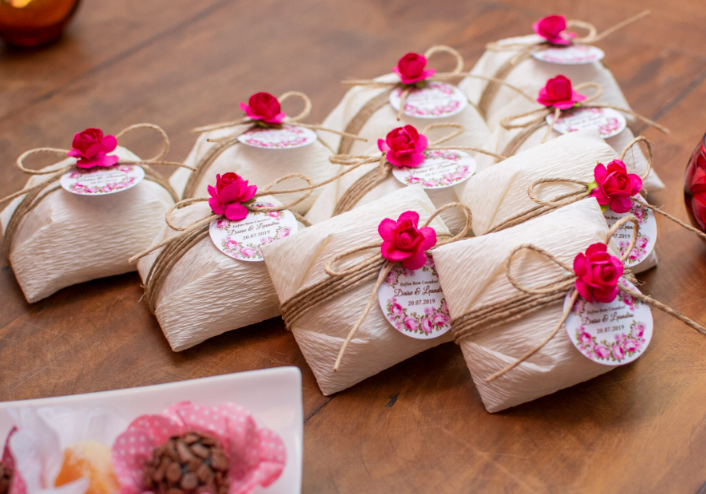
And on the other side of the pond, in the country of Brazil, weddings feature Bem Casados—Portuguese for “happily married”. These sponge cake sandwich cookies, filled with dulce de leche, symbolize the sweetness of the newlyweds’ union.
Adorned with bows or wrapped in playful paper, these treats are not just desserts; they’re delightful gestures of gratitude handed out to guests. It’s indeed a sugary celebration of everlasting happiness that you can take home in your hands.
Ukraine’s Cosmic Korovai
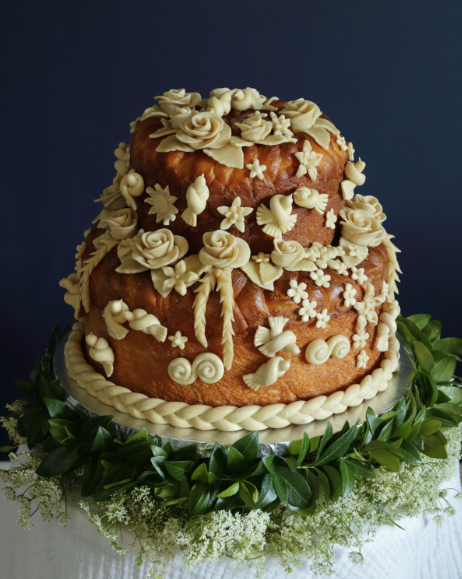
This delectable treat, shaped into a magnificent round weave, is the showstopper at weddings in Ukraine, giving traditional wedding cakes a run for their money.
Adorned with sculpted dough masterpieces, it’s like a gallery of sweetness, boasting symbols like doves for love, pine cones for fertility, and periwinkles for pure perfection. It’s not just a pastry; it’s a sweet masterpiece that weaves love, fertility, and purity into every delicious bite!
China’s Cheeky Bridal Cakes

These tasty little pastries take us all the way back to China. Originally known as marry girl or dowry cake, this popular Chinese wedding pastry has its roots back to the Three Kingdoms era (220-280 AD). The grand pastry boasts a sponge-cake texture and various iterations.
Popular renditions feature duck egg, lotus seed, yellow green bean paste, or Terminalia walnut. A modern twist includes the great-grandmother cake, a thoughtful gesture from the groom to the bride’s grandparents, symbolizing goodwill and extending the tradition’s embrace.
Indonesia’s Lovely Kek Lapis
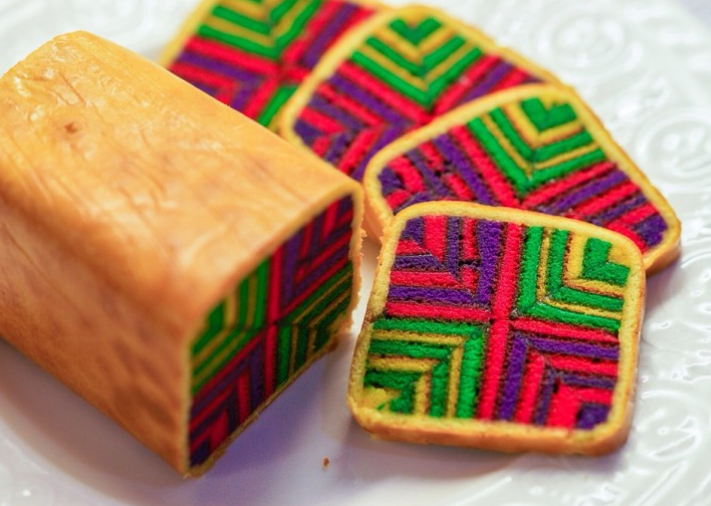
Reserved for special occasions, the labor-intensive Kek Lapis, a spiced Indonesian cake, is a culinary masterpiece. Modern layered cakes fall into two categories: those with regular layers and those adorned with patterns, motifs, or shapes, boasting at least two colors.
The baking process, whether in an oven or microwave, is a delicate dance. It’s not just a cake. The cake goes beyond a simple dessert—it’s a culinary celebration, a labor of love, and a delightful spectacle that transforms special moments into flavorful delights!
Korea’s Tasty Tteok

And from the Indian subcontinent to the Korean peninsula, where no wedding is complete without celebratory rice cakes! Elevating the joy of weddings, the coveted Bupyeon tteok becomes the celebrated star. Tteok, also known as dduk, showcases its versatility across hundreds of variations, enriching celebrations like birthdays and daily meals.
Yet, in the grand tapestry of weddings, the showstopper is undeniably the mujigae tteok—translating to the vibrant rainbow tteok. Tteok is an important symbol of jubilant festivities, adding a palette of irresistible colors to the joyous occasion.
Argentina’s Regal Rogel
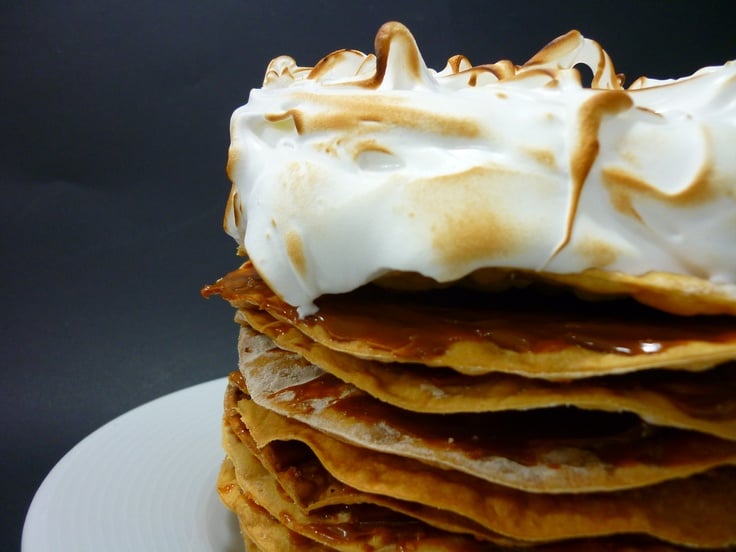
A sublime Argentinean dessert requires only dulce de leche sandwiched between crisp layers and crowned with meringue. The simplicity of this treat belies its deliciousness, offering a delightful combination of sweet, creamy dulce de leche nestled between layers of irresistible crunch, all topped off with a luscious meringue finish.
With its impressive looks and layers of decadence, there is no doubt that this cake turns every Argentinian wedding into a truly impressive occasion. It’s a culinary delight that speaks to the essence of Argentinean sweetness in a harmonious symphony of flavors and textures.
Nigeria’s Neat Kola Nut
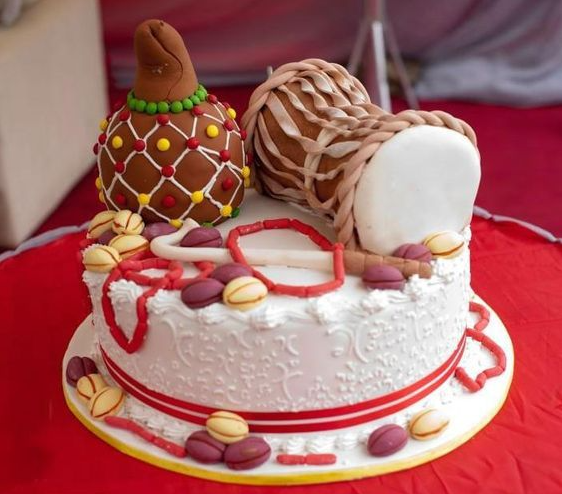
In Nigeria, the ritual of consuming kola nut stands as an enduring tradition in traditional weddings. This symbolic act signifies the couple and their families’ commitment to supporting each other through life’s challenges, drawing parallels to the nut’s medicinal properties.
In a poignant ceremony, the couple shares a kola nut among themselves and their parents, symbolizing the merging of their families into a unified whole. Beyond a mere nut, it serves as a powerful symbol of shared healing and the intertwining of two families in the ceremony.
China’s Chin-Dropping Wedding Feast
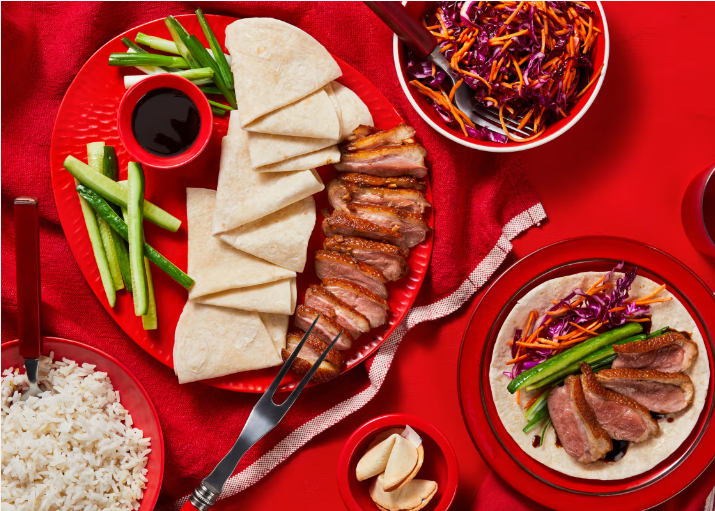
Yes yes we know, it’s no wedding cake, but this wedding feast is no short of a flavorful adventure! With a whopping 10 courses, the Chinese wedding feast is more than just a meal—it’s a promise of a sweet life for the newlyweds.
Expect a sea of red, with lucky dishes such as Peking duck- a bird that both mates for life, and served whole to represent completeness- gracing the table. It’s not just a meal; it’s a feast of love and good spirits to kickstart a marriage!
Mexico Makes a Comeback With Birria
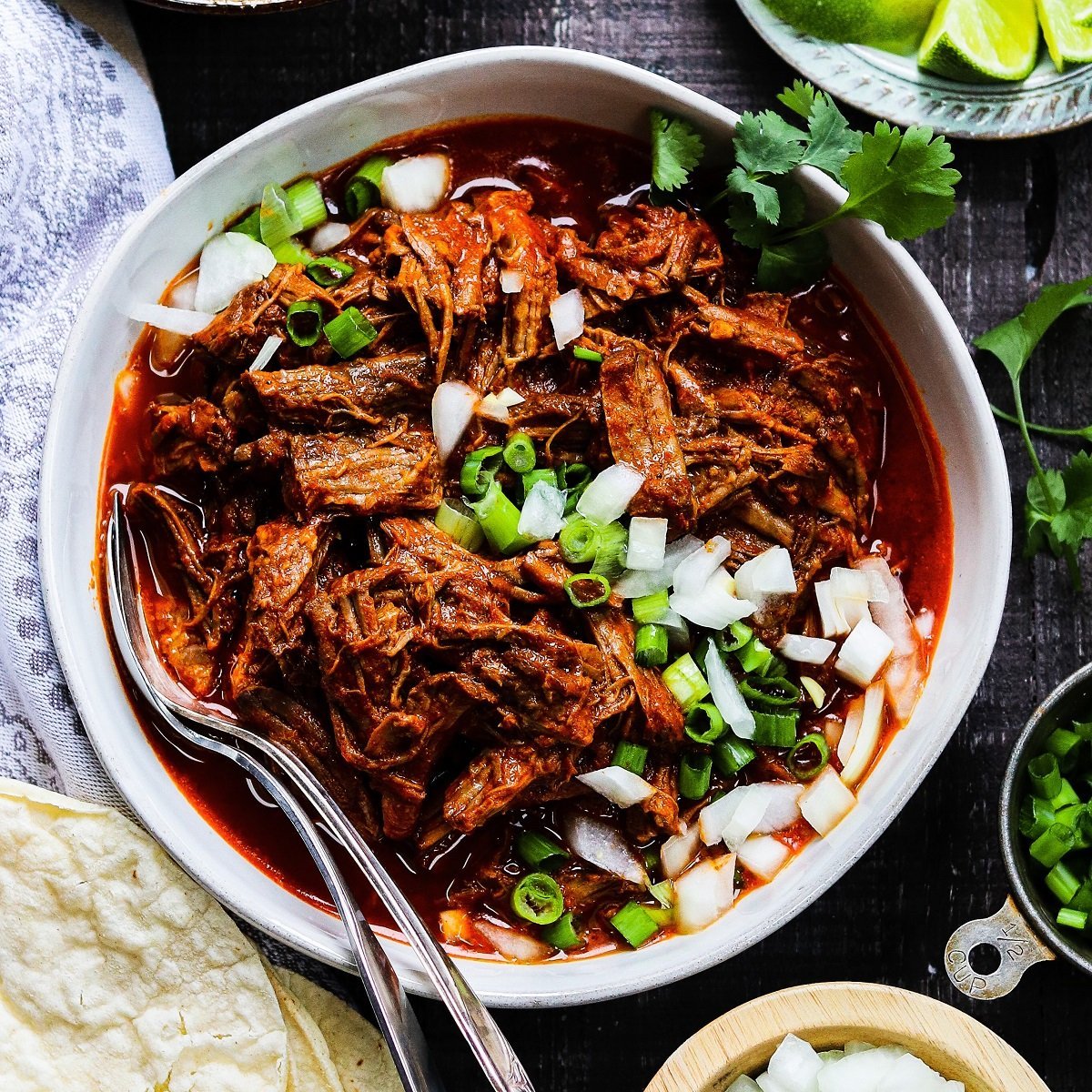
The third time’s a charm for Mexico and its many delicious wedding delicacies, this time it’s a dish renowned for its roasted goat, considered a potent aphrodisiac.
Weddings embrace this flavorful delight as a symbol of family growth and expansion, where goat takes the culinary spotlight. While beef or chicken may stand in on regular days, the allure of goat remains unparalleled for a wedding ceremony, infusing each bite with tradition, spice, and the promise of a flourishing union.
Armenia Glorious Ghapama
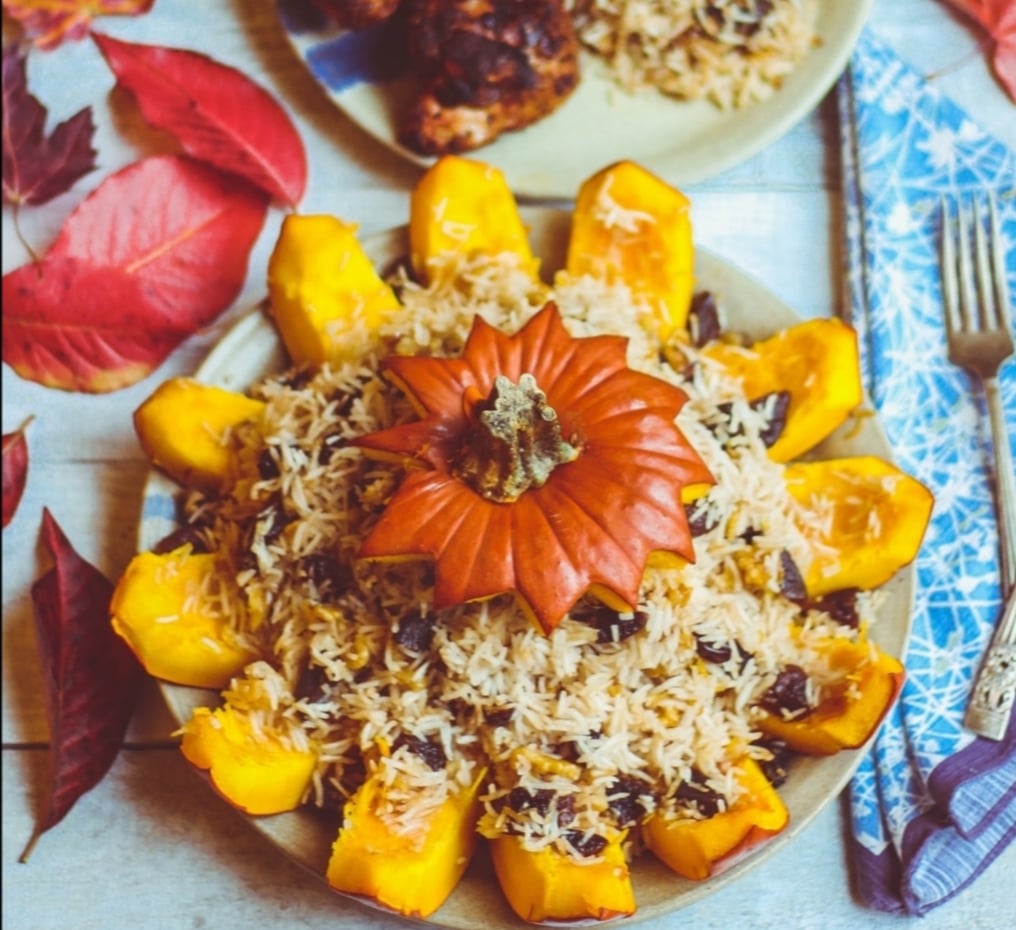
Again, not a cake- but definitely fancy and intricate enough to be mistaken for one. So important that there’s a song to serenade its sweet taste and irresistible aroma while dining, Ghapama isn’t a walk in the pumpkin patch. It’s a culinary adventure, involving pumpkin prowess, and crafting a decadent filling that transforms it into the ultimate pumpkin dish.
The pumpkin needs to be emptied before it is filled with rice and dried fruit, and mixed with honeya and pieces. Ghapama is where tradition meets tasty in an Armenian culinary symphony.
India’s Magnificant Madhupak

A swirl of sweetness at Hindu weddings with a twist—madhupak is stealing the spotlight instead of the typical wedding cake. Madhupak is a dance of rich yogurt symbolizing a lifetime of health, and honey, which represents the sweetest union.
While modern weddings might feature both madhupak and cake, why not spice up your Hindu celebration by adding these flavors to your cake? It’s not just a treat; it’s a modern twist on tradition, turning every bite into a sweet symphony of love and well-being!
Greece’s Gorgeous Breas Salad
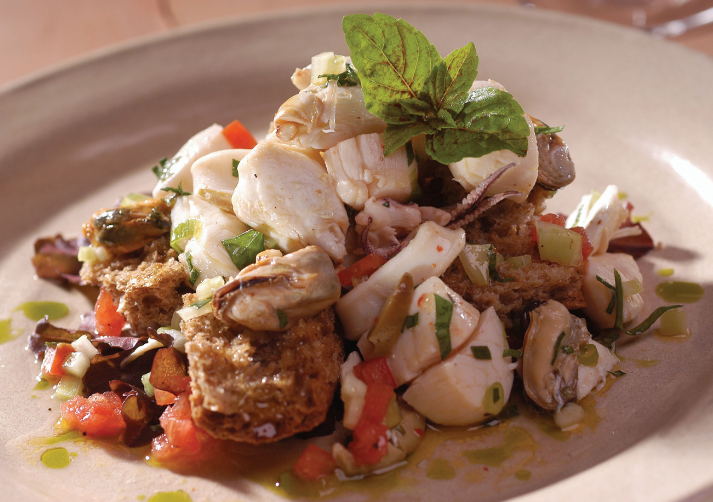
The country of Greece is famous for its richer-than-rich history and traditions, and this applies to weddings too, of course! At weddings, a lavish bread salad takes center stage at the reception, accompanied by a feast of delectable dishes.
Bursting with a fresh and mouthwatering variety of seafood, this hearty delicacy befits the special celebration. Adding a touch of fun, Greeks favor tying the knot in either January or June, guided by the belief that these months were under the rule of Hera, the goddess of marriage and fertility.
Italy’s Illustrious Confetti Bomboniera
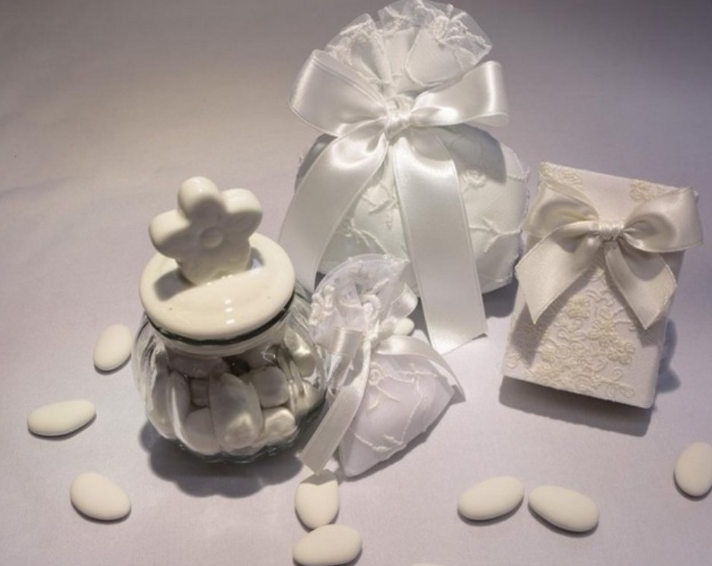
All the way back to the Mediterranean lands of Italy, where confetti bomboniera are an inseparable part of every wedding. Initially more a party favor than a treat, but we’ll roll with its edible charm. Italian wedding guests receive bomboniera, a thoughtful gift containing Jordan almonds that symbolize the nuanced nature of marriage—bitterness and sweetness.
Rooted in centuries-old tradition, the odd number of almonds holds significance, embodying wishes for the couple’s future. Each almond represents distinct aspirations, creating a sweet and meaningful token for the newlyweds.
Germany’s Hearty Hochzeitssuppe
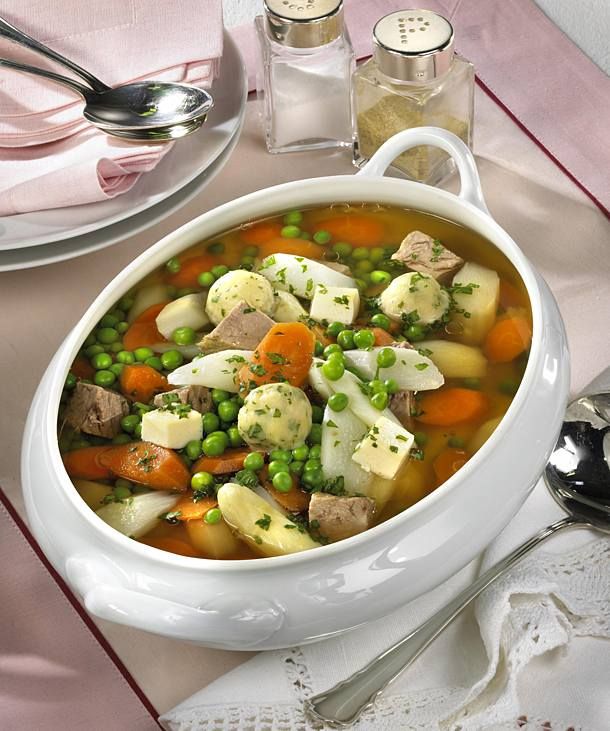
Crafting the intricate Hochzeitssuppe, a time-intensive labor of love, ensures it graces the table solely on special occasions. Aptly named “wedding soup,” its prime appearance happens at weddings. This culinary masterpiece, comprising chicken broth, chicken, meatballs, asparagus, and noodles, typically takes the spotlight as the inaugural course during the reception meal, notes German Culture.
Regional twists emerge, with Westfälische Hochzeitssuppe, or “Westphalian Wedding Soup,” showcasing a variation rooted in beef broth. It’s a culinary journey that elevates celebrations with each flavorful spoonful!
Another Indonesian Wonderful Wedding Treat

Betawi wedding and pre-wedding festivities feature a unique treat: sweetened loaves shaped like crocodiles. This reptilian creation holds symbolic significance, representing loyalty and a long life for the newlyweds.
Post-wedding, the bread, wrapped until then, is unveiled and enjoyed collectively with the family, fostering a sense of togetherness and shared joy. It goes beyond being a simple pastry; it embodies a sweet gesture, interweaving tradition, symbolism, and family bonds into the fabric of Betawi celebrations.
Korea’s Yummy Yaksik
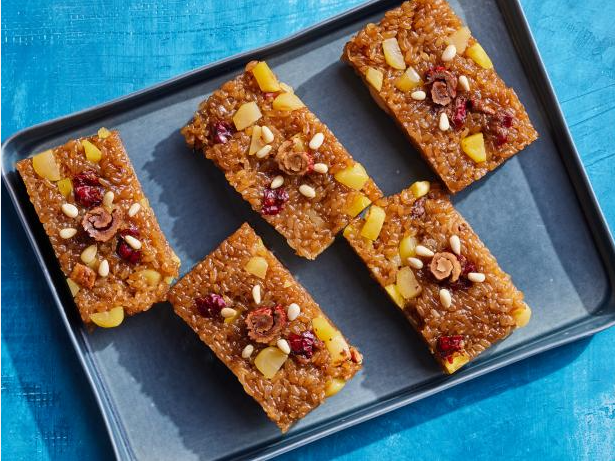
Yaksik, a delectable Korean sweet crafted from rice, honey, nuts, and jujubes, frequents special occasions and holiday celebrations. Notably, it graces Jeongwol Daeboreum, a festive occasion marking the first full moon of the lunar Korean calendar, and is a common sight at weddings.
Jujubes play a dual role in Korean weddings, featuring prominently in the Pyebaek tradition held a few days post-ceremony. Here, the bride’s family offers jujubes and chestnuts to the groom’s family, launching them at the newlyweds behind a screen. The fruit-catching act symbolizes the expected number of future children.
Turkiye’s Wonderful Wedding Pilaf
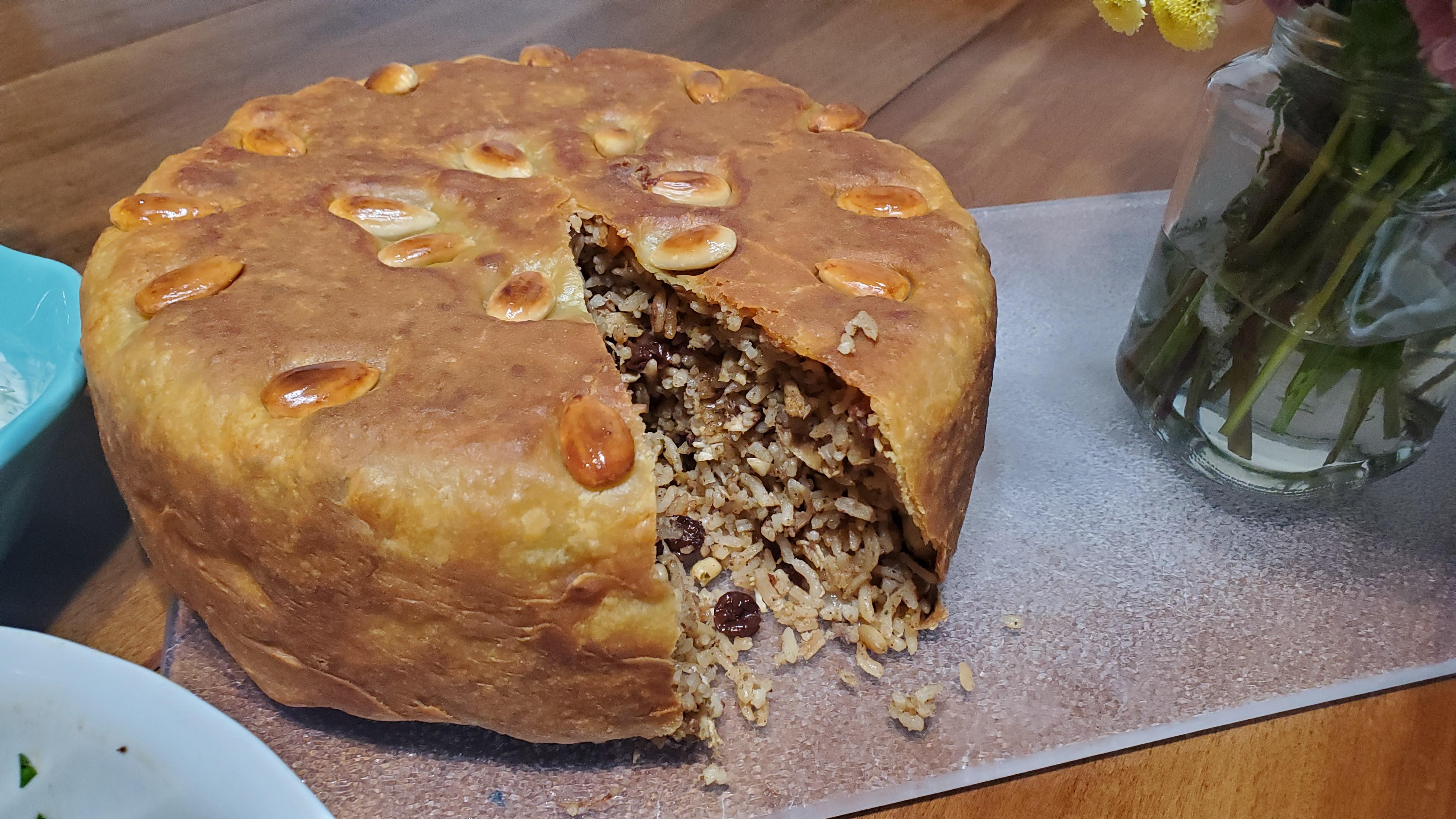
Originating from the southeastern region of Turkey, this pilaf holds significance at weddings, symbolizing the foundation of a shared home.
Much like other celebratory dishes cherished by families and communities, this intricately crafted package, filled with spiced chicken, nuts, herbs, and perfumed rice, requires time, care, and the application of age-old cooking techniques. It’s a culinary tradition that encapsulates the essence of celebration, bringing together flavors and symbolism to mark the beginning of a new chapter.
Japan’s Fruitful Fish Dish
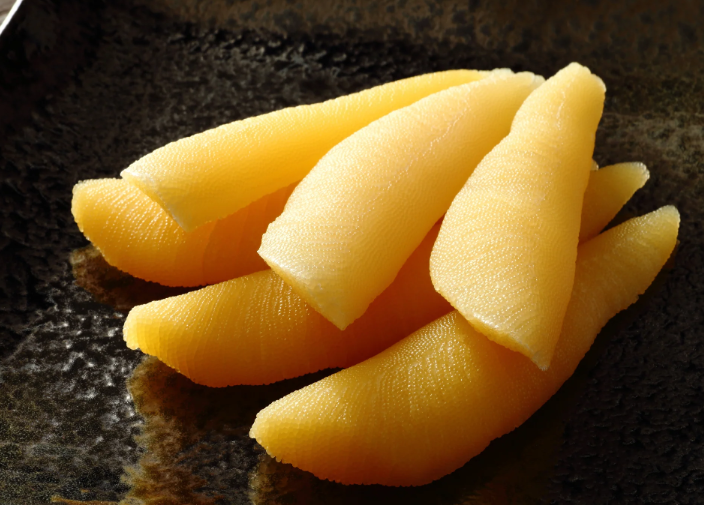
Presented to Japanese newlyweds alongside sushi and other dishes, this delicacy carries profound symbolism. Kazunoko is a dish featuring yellow herring roe, that undergoes a meticulous preparation process involving sun-drying the fish before preserving it in pickling salt.
The roe, symbolizing fertility, bestows blessings upon the newlyweds, marking the beginning of their journey to build a family. It’s more than a dish; it’s a tradition wrapped in flavors, bringing wishes for prosperity and fruitful family life to the forefront.
Norway’s Creamy Kransekage
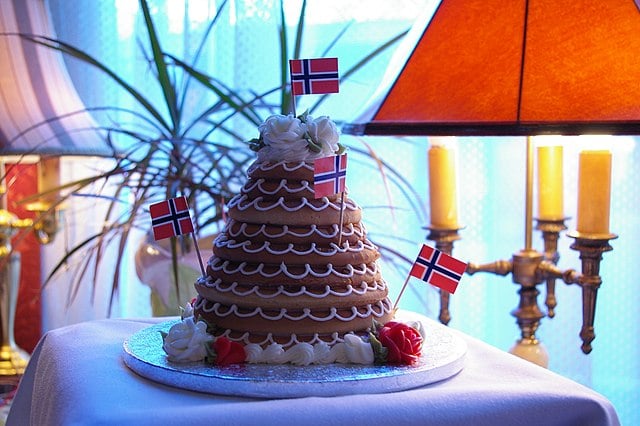
We’re starting our delightful journey in the lovely lands of Scandinavia, or more precisely in Norway, where the kransekage or kransekake takes the spotlight as a festive treat, gracing holidays and significant life milestones, including weddings.
Aptly named “wreath cake” or “tower cake,” this almond-based delicacy boasts a mesmerizing structure of numerous layered rings—sometimes reaching a whopping 18 rings (!) stacked on top of another with icing. A charming tradition dictates that the newlyweds lift the top layer during the serving, and the number of rings sticking to it foretells the couple’s future offspring.
Sweden’s Pretty Prinsesstårta
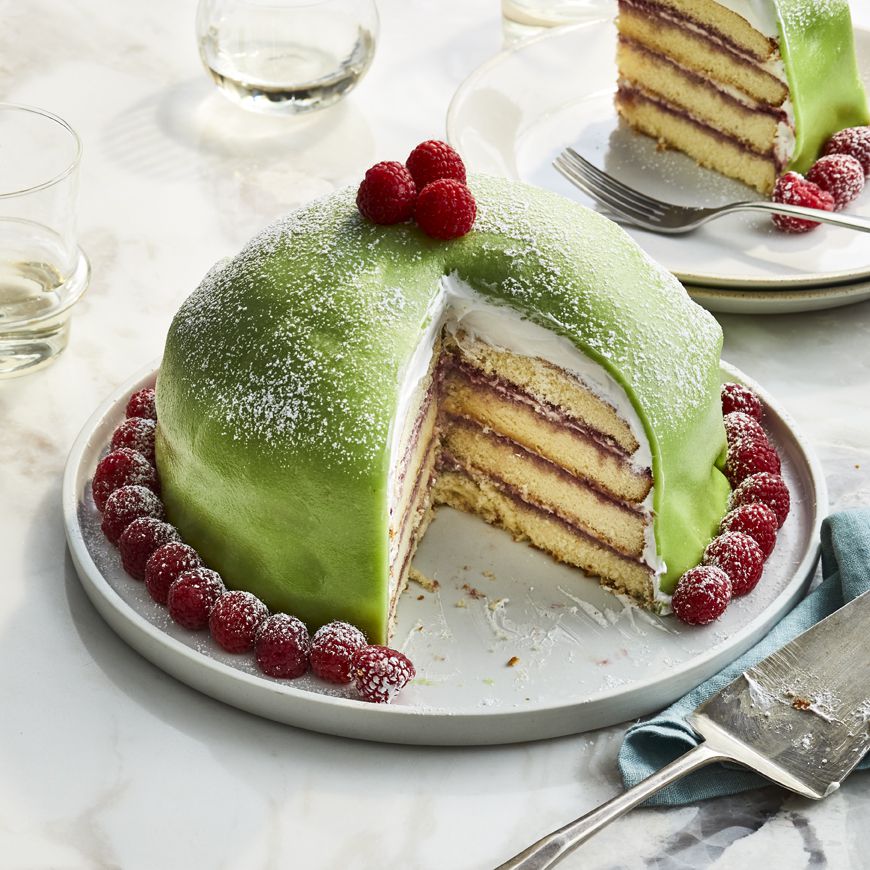
Not only oat milk and Ikea, the beautiful northern country of Sweden gave us one of the world’s most beautiful cakes. Presenting the star of the celebration: a domed vanilla sponge cake that’s a showstopper in every sense.
Bursting with tradition, this cake, usually rocking a vibrant green hue, is a tantalizing treat filled to the brim with creamy goodness and a burst of raspberry jam, all wrapped up in a marzipan hug! It’s pretty clear why this absolute beauty would be a staple an Swedish weddings.
Lithuania’s Sensational Šakotis
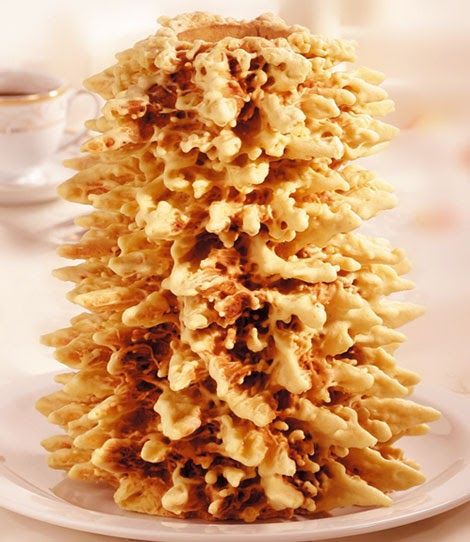
Introducing the life of the Lithuanian party – Šakotis, also known as the Lithuanian tree cake! This sweet treat is baked on a rotating spit, turning the baking process into a festive spectacle. With origins echoing the German Baumkuchen, this conical delight, resembling a pine tree, boasts “tree-rings” inside and drips as branches.
The labor of love includes layering batter on a rotating spit, resulting in a cake worth the wait. Decked out with chocolate or flowers or served plain, Šakotis steals the show at Lithuanian celebrations!
Mexico’s Wonderful Wedding Cookies

Allow us to circle back to Central America, for a slightly unusual wedding confection- the Polvorones. These bite-sized wonders, affectionately known as “Mexican Wedding Cookies” north of the border, are a must-have at celebratory occasions.
Dusted with a sprinkle of powdered sugar, these everyday ingredient miracles vanish faster than you can say “¡delicioso!” While Americans playfully rebranded them in the 1950s, in Mexico, they’re simply Polvorones. So, whether you’re dancing down the aisle or just craving a scrumptious treat, these cookies are the party starters you never knew you needed.
Japan’s Sensational San San Kudo
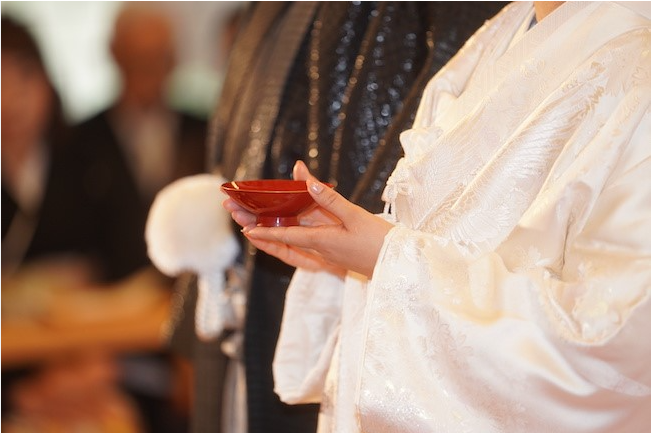
Embark on the timeless tradition of the sake-sharing ceremony, where the bride and groom unite through a shared act. With three sips from separate cups, they solidify their bond, as the indivisibility of the number three symbolizes their inseparable union.
Rooted in antiquity, this ritual holds diverse interpretations, sometimes extending to include parents, adding layers to the profound symbolism of the three cups of sake. Beyond a mere ceremony, it’s a sip of tradition, love, and an enduring connection that thrives on the enchantment of three!


